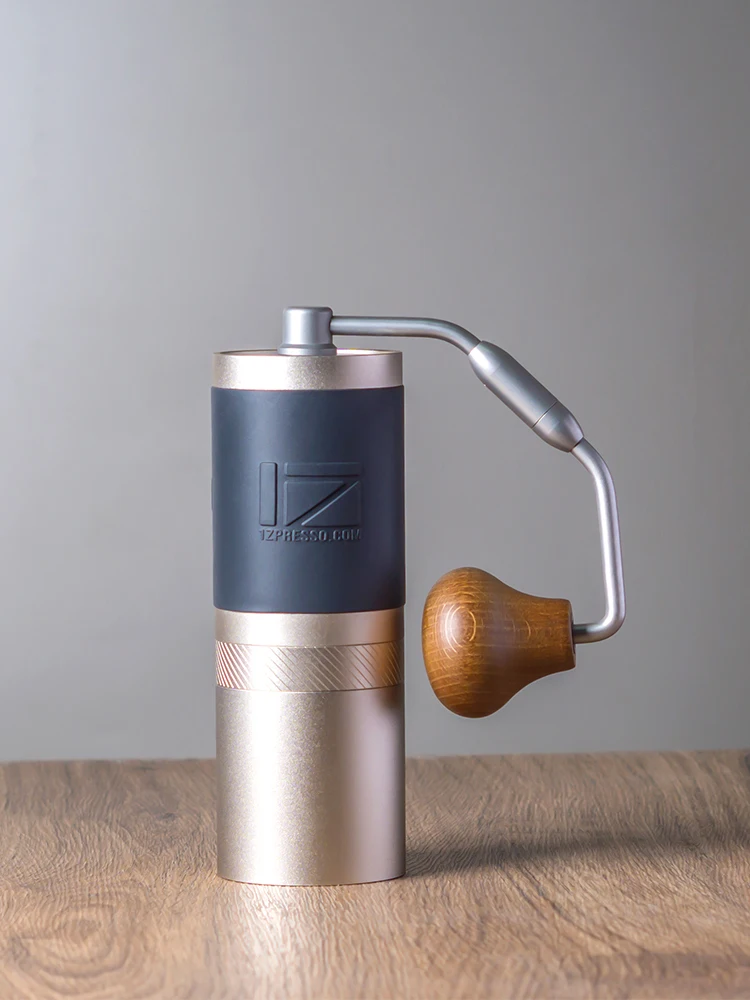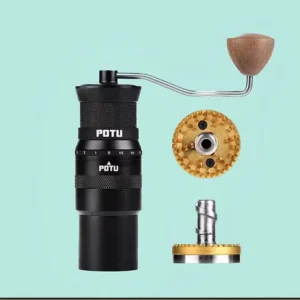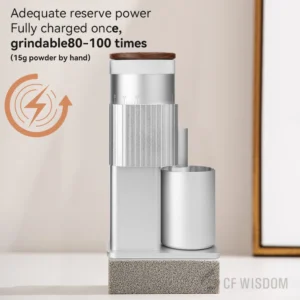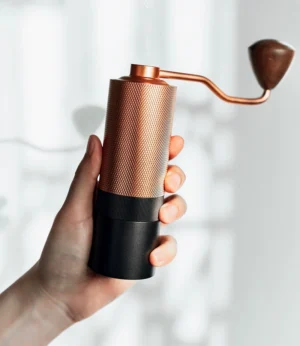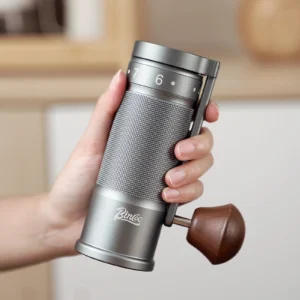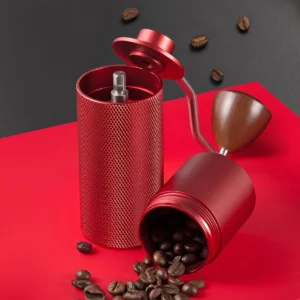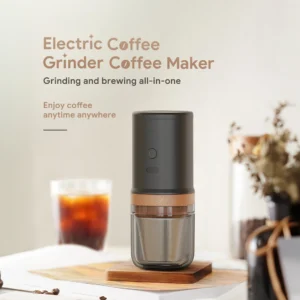Why a Quality Manual Grinder is Essential for Espresso
The perfect espresso demands precision at every step, but perhaps nothing impacts your result more significantly than the grind quality. When espresso water passes through coffee grounds at high pressure, even tiny variations in particle size can lead to drastically different results – from sour, under-extracted shots to bitter, over-extracted ones.
Manual coffee grinders have evolved significantly over the years, with premium models now offering grind consistency that rivals or even surpasses electric grinders costing twice as much. This precision is critical for espresso, where the difference between a perfect shot and a disappointing one might be just a fraction of a millimeter in grind size.
The benefits of choosing a quality manual grinder for espresso include:
- Superior control over grind fineness, allowing for micro-adjustments that many electric models can’t match
- Tactile feedback during grinding that helps you recognize when beans are fresh versus stale
- Unmatched portability for espresso enthusiasts who travel or have limited counter space
- Exceptional value compared to electric alternatives with similar grinding capabilities
- No electricity required, making them ideal for camping or travel brewing
Understanding the relationship between precision grind settings and espresso extraction is fundamental to appreciating why your grinder choice matters so much. The right manual grinder provides the foundation for consistently excellent espresso without breaking the bank.
The Critical Features That Make a Manual Grinder Suitable for Espresso
Not all manual coffee grinders are created equal, especially when it comes to espresso capability. The demanding nature of espresso extraction requires specific features:
Burr Quality and Design
The heart of any grinder is its burr set. For espresso, look for:
– Material: High-quality stainless steel or ceramic burrs are essential
– Geometry: Conical burrs with precise cutting surfaces produce fewer fines
– Size: Larger burrs (35mm+) typically provide more consistent results and faster grinding
– Precision manufacturing: Tight tolerances between burrs ensure uniform particle size
Adjustment Mechanism
Espresso requires extreme precision in grind adjustment. The ideal system offers:
– Stepless adjustment allowing infinite settings between fine and coarse
– Micro-stepped systems with very small increments between clicks
– Consistent settings that don’t drift during grinding
– Clear markings to help replicate successful settings
Grind Consistency
At the fine settings espresso demands, consistency becomes critical. Quality grinders provide:
– Uniform particle distribution with minimal fines
– Stability during grinding to prevent burr wobble
– Consistent results from one session to the next
Advanced knowledge of optimal espresso grind settings helps you take full advantage of a quality grinder’s capabilities. The precision-engineered components in high-end manual grinders translate directly to better extraction and flavor clarity in your cup.
Build Quality and Stability
When grinding for espresso, you’ll experience significant resistance. The grinder must be:
– Constructed with solid materials (metal vs. plastic)
– Engineered with minimal play in the grinding shaft
– Designed with comfortable, slip-resistant grips
– Built to handle the higher forces required for fine grinding
Our Testing Methodology
To ensure our recommendations truly deliver for espresso brewing, we developed a comprehensive testing protocol:
Selection Criteria
We focused on grinders that:
– Feature high-quality burr sets specifically capable of fine grinding
– Offer precise adjustment mechanisms suitable for espresso
– Represent different price points to address various budgets
– Have received positive feedback from espresso enthusiasts
Testing Protocol
For each grinder, we followed a consistent evaluation process:
– Used the same medium-roast espresso blend for all tests
– Prepared 18g doses (standard double shot)
– Targeted 25-30 second extraction times
– Assessed shots on a professional espresso machine
– Repeated tests multiple times to ensure consistency
Evaluation Metrics
We scored each grinder based on:
– Grind consistency at espresso settings (examined visually and through extraction)
– Ease and precision of adjustment for dialing in
– Physical effort required to grind for espresso
– Build quality and expected longevity
– User experience and ergonomics
Understanding the proper methodology for dialing in espresso grind settings was crucial to our evaluation process, allowing us to assess how each grinder performs under real-world conditions.
Premium Pick: Comandante C40 MK4 – The Ultimate Precision Grinder
Rating: 5/5
The Comandante C40 MK4 represents the pinnacle of manual espresso grinding, offering uncompromising build quality and consistency that rivals commercial electric grinders.
Espresso Performance
The Comandante truly shines when grinding for espresso, delivering exceptional particle consistency that translates to even extraction and remarkable flavor clarity. The grind adjustment system, while clicked rather than stepless, offers 15-20 useful settings within the espresso range alone, allowing for precise dialing in.
Technical Specifications
- Burr Design: 39mm high-nitrogen stainless steel conical burrs
- Adjustment Mechanism: Clicked system with approximately 40 microns between settings
- Grinding Speed: 40-50 seconds for an 18g espresso dose
- Capacity: Comfortably holds 30-40g of beans
Build Quality
Constructed with aircraft-grade aluminum and stainless steel components, the Comandante feels virtually indestructible. The wooden handle provides excellent leverage, making fine grinding considerably less strenuous than with lesser grinders.
Pros and Cons
Pros:
– Exceptional grind consistency for perfect extractions
– Incredibly precise adjustment system
– Superior build quality with replaceable parts
– Minimal retention of grounds
– Comfortable grinding experience even at fine settings
Cons:
– Premium price point
– Clicked rather than stepless adjustment
– Requires more effort than some competitors
The Comandante sets the standard for manual espresso grinding. Its reputation among professionals is well-earned, making it the ideal choice for discerning espresso enthusiasts who demand the absolute best in cup quality and are willing to invest accordingly.
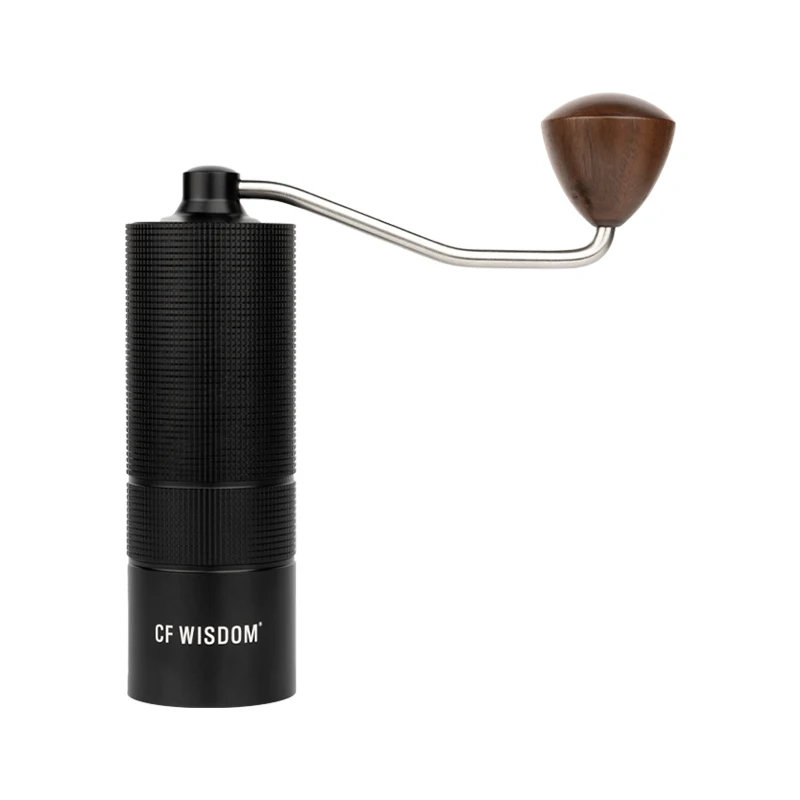
For those seeking the ultimate in hand grinding precision, our manual coffee grinders for espresso collection features this and other premium options.
Best Value: 1Zpresso JX-Pro – Professional Quality at a Reasonable Price
Rating: 4.8/5
The 1Zpresso JX-Pro hits the sweet spot of performance and affordability, delivering nearly professional-level results at a significantly lower price point than our premium pick.
Espresso Performance
The JX-Pro delivers remarkable consistency at espresso settings, with a stepped adjustment system offering approximately 200 clicks across its range. This translates to about 12.5 microns per click—finer adjustment than many electric grinders provide. The result is exceptional control over extraction, allowing even beginners to dial in shots with confidence.
Construction Quality
Built with a solid aluminum body and high-quality 48mm stainless steel burrs, the JX-Pro feels substantial and durable. The magnetic catch cup attaches securely, and the ergonomic design makes grinding relatively comfortable, even at espresso fineness.
Technical Specifications
- Burr Design: 48mm stainless steel conical burrs
- Adjustment Mechanism: Numerically marked click system with 200+ settings
- Grinding Speed: 30-40 seconds for an 18g espresso dose
- Capacity: 30-35g whole beans
Pros and Cons
Pros:
– Exceptional grind quality at less than half the price of some competitors
– Numeric adjustment system makes repeating settings simple
– Larger burrs provide faster grinding than many alternatives
– Robust construction built to last
– Excellent value proposition
Cons:
– Slightly heavier than some competitors
– Can be challenging to disassemble for deep cleaning
– Not as aesthetically refined as premium options
The impact of burr size on espresso quality is evident in the JX-Pro’s performance, with its larger 48mm burrs contributing to both speed and consistency. This grinder represents the best balance of quality and value in the manual espresso grinder market.
Budget-Friendly Option: Timemore C2 – Entry-Level Excellence
Rating: 4.2/5
The Timemore C2 proves that quality espresso grinding doesn’t have to break the bank. While making some compromises compared to premium models, it delivers surprisingly capable performance at an accessible price point.
Espresso Performance
The C2 handles espresso grinding adequately, though requiring more effort than our higher-end picks. Its stepped adjustment isn’t quite as fine as espresso purists might desire, but it provides enough range to achieve good shots with some practice. The grind consistency is impressive for the price, though not quite matching our premium or value picks.
Build Quality
Constructed with an aluminum body and stainless steel burrs, the C2 feels substantially better built than most grinders in its price range. The folding handle provides good leverage, and the overall construction inspires confidence in its durability.
Technical Specifications
- Burr Design: 38mm stainless steel conical burrs
- Adjustment Mechanism: Stepped system with 12-15 useful settings for espresso
- Grinding Speed: 60-70 seconds for an 18g espresso dose
- Capacity: 25g whole beans
Pros and Cons
Pros:
– Excellent grind quality for the price range
– Solid construction with quality materials
– Lightweight and portable
– Smooth grinding action
– Remarkable value for entry-level espresso
Cons:
– Fewer adjustment steps within espresso range
– More effort required than premium models
– Some plastic components in crucial areas
– Less consistent at very fine settings
For newcomers to manual espresso brewing or those on a tight budget, the Timemore C2 represents an excellent entry point that won’t require immediate upgrading as your skills develop.
Specialty Option: Kinu M47 Classic – For the Espresso Perfectionist
Rating: 4.9/5
The Kinu M47 Classic is designed with the espresso perfectionist in mind, offering several specialized features that cater specifically to the demands of fine espresso grinding.
Unique Features
What truly sets the Kinu apart is its precision adjustment mechanism. Unlike most grinders that adjust from the bottom, the M47’s innovative design adjusts from the top with a numbered dial that offers incredible precision—approximately 50 settings within the espresso range alone. This translates to unparalleled control over extraction.
Espresso Performance
The Kinu delivers exceptional particle consistency with minimal fines, resulting in clean, clear flavor and even extraction. Its design virtually eliminates retention, meaning you don’t lose precious coffee between grinds or contaminate new batches with stale grounds.
Technical Specifications
- Burr Design: 47mm hardened steel conical burrs
- Adjustment Mechanism: Stepless with numeric reference points
- Grinding Speed: 35-45 seconds for an 18g espresso dose
- Capacity: 30-35g whole beans
Pros and Cons
Pros:
– Industry-leading precision in adjustment
– Exceptional build quality with all-metal construction
– Near-zero retention design
– Smooth grinding experience despite fine settings
– Consistent results shot after shot
Cons:
– Premium price point
– Heavier than some alternatives
– Less portable than some competitors
– Learning curve to master the adjustment system
For espresso enthusiasts who appreciate engineering excellence and demand the ability to make minute adjustments, fine adjustment hand grinders like the Kinu M47 Classic provide unmatched control over your brewing parameters.
Compact Travel Option: Orphan Espresso LIDO 3 – Portability Without Compromise
Rating: 4.7/5
The Orphan Espresso LIDO 3 strikes an impressive balance between travel-friendly design and professional-grade espresso capability, making it ideal for the espresso enthusiast who refuses to compromise while on the move.
Portability Features
Despite its substantial grinding capability, the LIDO 3 features a thoughtful design that prioritizes portability:
– Disassembles for compact packing
– Comes with a custom carrying case
– Durable materials that withstand travel conditions
– No loose parts that could get lost
Espresso Performance
What’s remarkable about the LIDO 3 is that it maintains professional-level performance despite its travel-oriented design. The stepless adjustment system provides infinite settings within the espresso range, and the large burrs deliver consistency comparable to much larger grinders.
Technical Specifications
- Burr Design: 48mm Swiss-made steel burrs
- Adjustment Mechanism: Stepless with reference markings
- Dimensions: 13.5” tall x 2.5” diameter when assembled
- Weight: 1.2 lbs (550g)
- Capacity: 30-40g beans
Pros and Cons
Pros:
– Full-sized performance in a portable package
– Exceptional grind consistency for travel grinder
– Durable construction built for adventure
– Comfortable dual-handle design reduces effort
– True stepless adjustment for perfect dialing in
Cons:
– Learning curve for adjustment mechanism
– Bulkier than some dedicated travel grinders
– Requires two hands for optimal grinding
– Premium price point
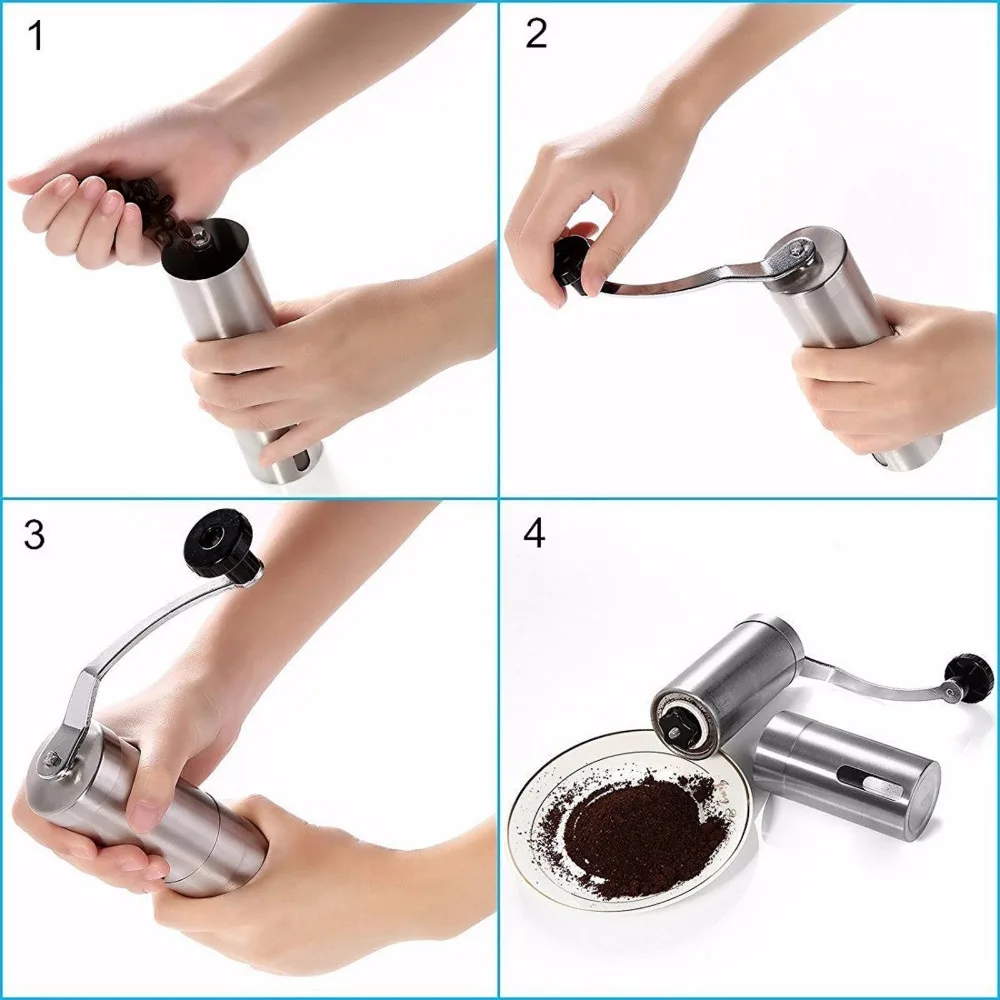
For coffee lovers who demand great espresso even while traveling, our selection of travel coffee grinders offers portable options without sacrificing quality.
Comparison Table: Side-by-Side Specifications
| Grinder Model | Burr Size | Burr Material | Adjustment Type | Capacity | Grinding Time (18g) | Weight | Best For |
|---|---|---|---|---|---|---|---|
| Comandante C40 | 39mm | High-nitrogen steel | Clicked (40μm) | 30-40g | 40-50 sec | 740g | Precision enthusiasts |
| 1Zpresso JX-Pro | 48mm | Stainless steel | Clicked (12.5μm) | 30-35g | 30-40 sec | 780g | Value-conscious baristas |
| Timemore C2 | 38mm | Stainless steel | Stepped | 25g | 60-70 sec | 430g | Budget-conscious beginners |
| Kinu M47 Classic | 47mm | Hardened steel | Stepless | 30-35g | 35-45 sec | 920g | Perfectionists |
| LIDO 3 | 48mm | Swiss steel | Stepless | 30-40g | 35-45 sec | 550g | Traveling enthusiasts |
This comparison highlights the key differences that impact espresso performance across our recommended models. The right choice ultimately depends on your specific needs, preferences, and budget.
Fine Adjustment Hand Grinder, Precision Manual Grinder, Travel Coffee Grinder
Price range: $185.11 through $494.63 Select options This product has multiple variants. The options may be chosen on the product pageHand Burr Grinder, Hand Crank Coffee Grinder, Manual Espresso Grinder, Portable Coffee Grinder
Price range: $262.72 through $300.22 Select options This product has multiple variants. The options may be chosen on the product pageHand Burr Grinder, Manual Coffee Grinder Stainless Steel, Precision Manual Grinder
Price range: $183.64 through $187.52 Select options This product has multiple variants. The options may be chosen on the product pageHandheld Burr Grinder, Manual Coffee Mill Grinder, Travel Coffee Grinder
$191.45 Select options This product has multiple variants. The options may be chosen on the product page
How to Get the Best Results from Your Manual Grinder for Espresso
Even the finest manual grinder requires proper technique to deliver its best results. Follow these steps to maximize your espresso quality:
Start with the right setting: Begin slightly coarser than you think you need, then gradually adjust finer until you hit the sweet spot. Document successful settings.
Use the RDT method: Lightly mist your beans with water (just a few drops on a spoon) before grinding to reduce static and retention. This simple trick dramatically improves consistency.
Maintain a consistent grinding technique:
– Hold the grinder vertically
– Use smooth, even rotations
– Maintain steady pressure
– Avoid stopping mid-grindClean regularly: Coffee oils build up quickly at espresso settings, affecting flavor and increasing grinding resistance. Disassemble and clean your grinder at least monthly.
Calibrate periodically: Check that your zero point (where burrs touch) hasn’t shifted over time. Recalibrate according to your manufacturer’s instructions.
Mastering precision grind adjustments for espresso takes practice, but the improvement in shot quality makes the effort worthwhile. Each manual grinder has unique characteristics, so take time to learn your specific model’s optimal technique.
Is a Manual Grinder Right for Your Espresso Workflow?
While manual grinders offer exceptional quality, they’re not ideal for everyone. Consider these factors when deciding:
Manual grinders excel when:
– You prepare 1-4 espresso shots daily
– You appreciate the hands-on ritual of coffee preparation
– You have limited counter space
– You travel frequently with your brewing gear
– You value grind quality over convenience
– You seek the best quality-to-price ratio
An electric grinder might be better if:
– You prepare numerous shots throughout the day
– You frequently make espresso for groups
– You have physical limitations that make manual grinding difficult
– You prioritize speed and convenience above all else
– Budget is less of a concern than time savings
Manual grinding for espresso typically requires 30-60 seconds of moderate effort per shot. While not strenuous for most users, it does add a step to your morning routine that some may find inconvenient.
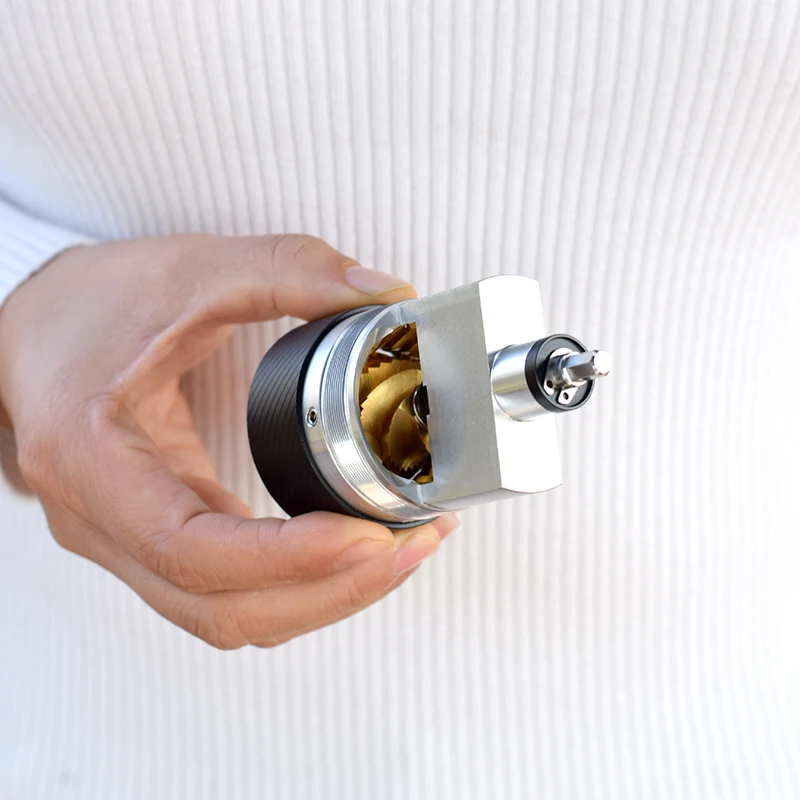
Frequently Asked Questions About Manual Espresso Grinding
Can any manual grinder work for espresso?
No. Many budget manual grinders cannot achieve the fine, consistent grind espresso requires. Look specifically for models that advertise espresso capability and feature precision adjustment mechanisms.
How fine should espresso be ground?
Espresso typically requires a very fine grind—similar to table salt or slightly finer—but the exact setting varies based on your specific beans, machine, and taste preferences. The ideal grind allows water to pass through at moderate pressure, extracting in 25-30 seconds.
How often should I clean my manual grinder?
For espresso use, clean thoroughly every 1-2 pounds of coffee (roughly monthly for average users). Fine grinding creates more dust and oil accumulation that affects performance and flavor.
Are manual grinders truly better than electric ones at similar prices?
Generally yes. A $200 manual grinder often delivers grind quality comparable to $500+ electric models because manual grinders don’t require motors, electronics, or extensive housings, allowing manufacturers to invest more in the burrs and grinding mechanism.
How long does manual grinding for espresso take?
With a quality grinder, expect to spend 30-60 seconds grinding an 18g double shot. Larger burrs and better engineering typically result in faster grinding times.
Understanding proper espresso grind size is essential for getting the best results from any grinder, manual or electric.
Important Accessories for Manual Espresso Grinding
Enhance your manual grinding experience with these complementary tools:
- Dosing funnel: Eliminates mess when transferring grounds to your portafilter
- Distribution tool: Ensures even distribution of grounds before tamping
- Small scale (0.1g precision): Allows consistent dosing for repeatable results
- Cleaning brush set: Reaches tight spaces between burrs and in adjustment mechanisms
- Rocket blower: Removes loose grounds without moisture
- Airtight container: Keeps your beans fresh between grinding sessions
- Grind collection cup: Provides static-free collection for cleaner workflow
These simple accessories significantly improve the precision and cleanliness of your manual grinding workflow, helping you achieve better results with less frustration.
At Savor Suite, we understand that the journey to perfect espresso begins with precise grinding. The right manual grinder not only delivers exceptional particle consistency but also connects you more deeply to the brewing process. Whether you’re a seasoned enthusiast or just beginning your espresso journey, investing in quality grinding equipment is perhaps the single most important step toward consistently excellent results.

